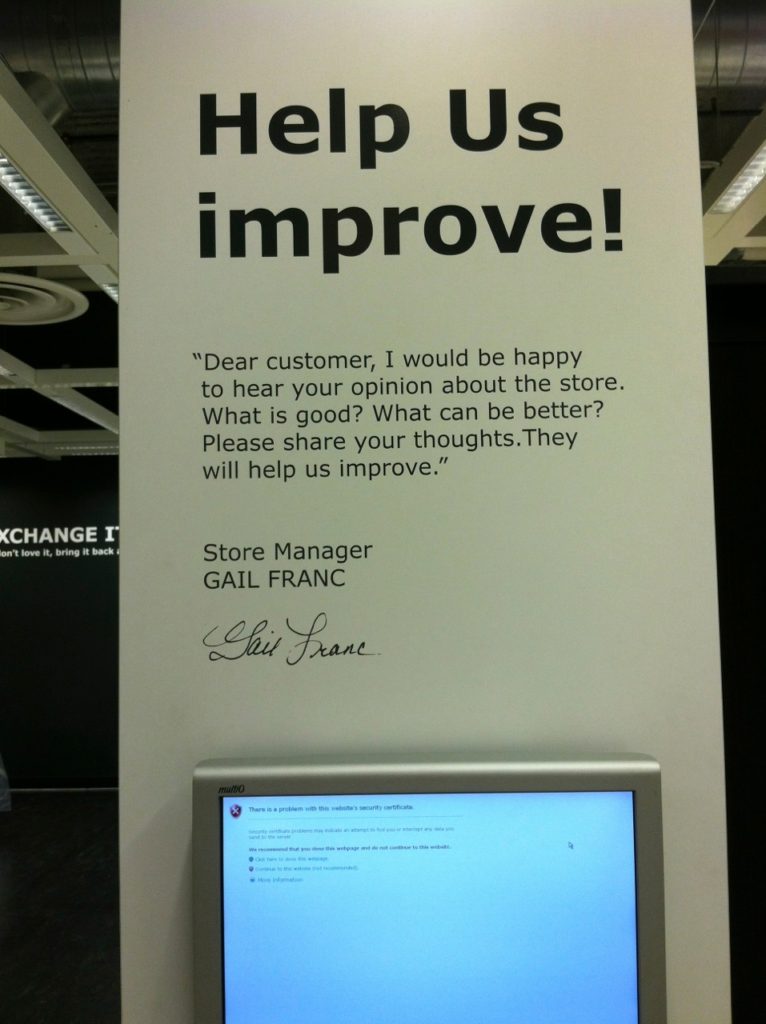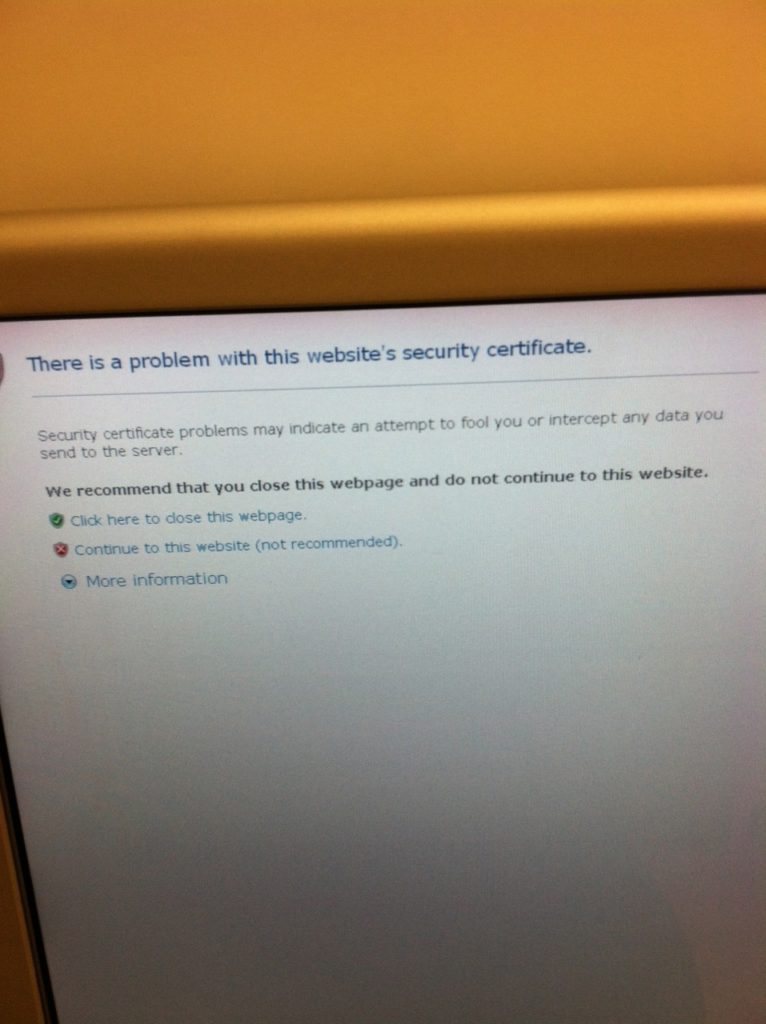
There are plenty of companies that don’t take the time to solicit feedback from their customers. And that’s bad.
But what is perhaps even worse are those companies that say they want your feedback and put instruments in place to collect it, but then make it difficult (or impossible) to convey your opinion.
I was reminded of this in two recent interactions with IKEA and American Airlines.
My local IKEA has a very conspicuous feedback kiosk in the store. Sporting a big “Help Us Improve!” sign, this kiosk practically begs people to come over for a look.

And on the day I was visiting, what did customers see on the kiosk computer screen when they approached it to provide their feedback? Take a look:

Then there’s American Airlines. The last time they sent me a post-flight customer satisfaction survey, I clicked on the survey link and got — you guess it — a website security error:

It’s a shame that these companies invested the effort to create a customer feedback platform, but then managed it with such incompetence. Learn from their gaffe and keep these three tips in mind:
1. Treat feedback solicitation like any other customer touchpoint. Feedback instruments aren’t just a means to gauge the quality of your customer experience – they’re actually part of your customer experience! Feedback solicitation is a touchpoint like any other, and as such, it deserves to be carefully choreographed and executed. So test your survey platform regularly, just as you might do with your point-of-sale systems. Obsess over how you communicate the request for feedback, to set the right tone with the customer. In short, view feedback solicitation as yet another interaction where you can shape customer impressions about your business.
2. Make the request for feedback genuine. If customers suspect that your invitation for feedback is not entirely genuine – or at least not really that important to you – then the goodwill you’d hope to earn by soliciting their opinion will never come to pass. Even when your feedback platform works flawlessly, just how easy is it for your customers to use it? Do you welcome feedback but ask customers to complete a 20-minute survey to provide it? These are the types of cues that customers will pick up on when determining if you’re just paying lip service to the concept of customer feedback.
3. Close the loop. The most compelling and tangible way to demonstrate that you really want customer feedback (beyond making it easy for people to provide it) is to respond to the comments you get. At the very least, message your customer to acknowledge the feedback and thank them for it. Even better, provide a personalized response to customers who mentioned a specific pain point or offered a suggestion. By “closing the feedback loop,” you’ll send a powerful and positive signal to customers – even dissatisfied ones – that you take their feedback seriously and are genuinely trying to act on it.
Customer feedback is a gift. Make certain that your instruments for collecting it are a source of pride… not ridicule!
Jon Picoult is the founder of customer experience advisory firm Watermark Consulting. As a consultant and a speaker, he’s worked with the CEOs and executive teams of some of the world’s leading brands. Learn more about Watermark or follow Jon on Twitter @JonPicoult.